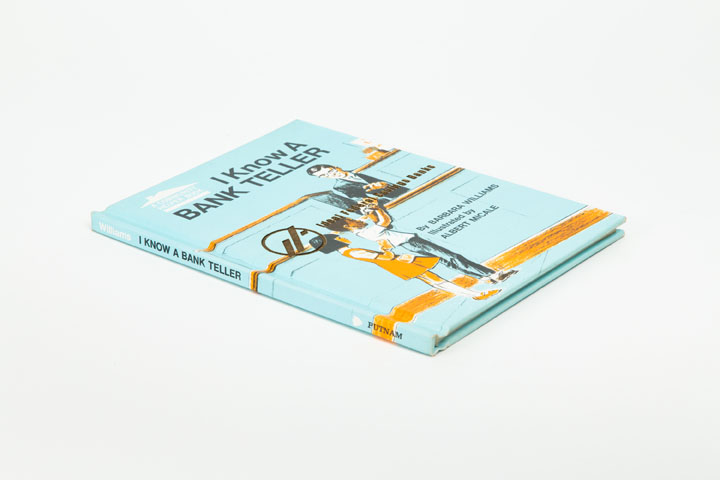MICHAEL MANDIBERG | SIMON DENNY
by Ian Cofre
The process of banks failing due to the subprime mortgage crisis greatly accelerated after Lehman Brothers declared bankruptcy on September 15, 2008. Facing systemic risk and contagion, the Federal Deposit Insurance Corporation (“FDIC”), a U.S. government organization, helmed the swift and ruthless effort to quarantine this plague. Eight years to the day from Lehman’s failure, artist and educator Michael Mandiberg debuted his current exhibition, FDIC Insured, which captures the extent of this financial unraveling in a clear-eyed site-specific installation tucked away in a vacant office on the 15th Floor of 40 Rector Street. Once a bank fails, the FDIC as receiver will transfer or sell off its assets, then quickly erase its visual identity, scrubbing its public presence from the physical and digital world in a bid to restore confidence in the system. Mandiberg, as an EYEBEAM fellow (’08 – ’10), tracked this history in the making through the FDIC’s announcements, collecting the logos for 527 failed banks in weekly download sessions. Staged as a memorial, the project is a chronological archive that combines a collection of discarded and dollar-bin hardcover books of financial planning, business, and self-help literature with these iconographic remnants branded on their covers via laser-cutter.
Mandiberg’s previous project—Print Wikipedia (2015), a 7,473-volume upload of Wikipedia that was the subject of his exhibition From Aaaaa! to ZZZap! at Elizabeth Denny Gallery—also tackled the physical manifestation of data and how to give it literal and figurative weight. Bank closures have slowed, but they haven’t stopped, and FDIC Insured reiterates the futility in containing such an amount of information through translation into an object. But by conflating all the actors who were burned in the process—the customers, the shuttered banks, the books—the gesture could come across as simple without the subtle ironies and commentary that emerge from scanning the book spines of aspirational and technical titles such as: Ethics, Morality, and Insurance: A Long-Range Outlook; Bank Frauds: Their Detection and Prevention; Triumph of The Middle Classes; and Money Should Be Fun. Certain pairings heighten the tragedy even further: a logo for NetBank on a copy of Consumer Trap; First Priority on The Future of the Corporation; Bears Sterns on Leveraged Buyouts; and Washington Mutual on Political Brokers. My personal favorite is Ideal Federal Savings Bank on the illustrated cover of I Know a Bank Teller (1968), which features two children, one black, one possibly Asian, presumably making their first deposit, yet diffident before the overly eager white bank teller.

With one chapter closing, another opened in the form of Simon Denny’s Blockchain Future States, simultaneously on view at Petzel Gallery this September and October. Denny (no relation to Mandiberg’s gallerist) is a self-professed fan-boy and evangelist of Bitcoin and its underlying technology, the blockchain, which is a decidedly sexier term than calling it what it is—a distributed and encrypted public ledger. Through a series of sculptural installations, Denny explores the origin stories of the most visible entities developing the technology that will revolutionize global finance, or not. There are clues as to the artist’s skepticism and humor throughout the proposed celebration. Cut-outs of the founders of three companies—Digital Asset, 21 Inc., and Ethereum—lay out their different visions for governance based on a decentralized digital currency. White-board globes set out a mix of neoliberal, libertarian, and techno-utopian buzzwords that influence the separate, but parallel aesthetics that remind one of tech tradeshow booths, each slightly more dystopian than the last. Denny literally games the system, taking the respective ideologies and creating his own oversized special editions of Hasbro’s RISK called Blockchain Conquest in Capital Markets, Tech/Venture, and Crypto-Anarchist flavors. Corresponding case mod designs (for the performance PC used in mining Bitcoin) sit atop Plexiglas cubes within which small, wooden tombstones detail the lifespan of obsolete ideas according to each system—Disruption, Geography, and Government. One case for 21 Inc. details the Hype Cycle, a fluctuating graph of Visibility over Time, which could go for any one of these companies.
Whether it’s the prologue or epilogue to Blockchain, Denny’s final installation unpacks the myth of Satoshi Nakamoto with profiles of the most likely contender(s) for the pseudonymous inventor of Bitcoin. They surround the protagonist from Pokémon, whose Japanese name is Satoshi and American name is Ash. He stands side-by-side in a palindromic arrangement with Ho-Oh, the uncatchable pokémon. If Denny meant to imply that Satoshi’s Bitcoin is a phoenix rising from the smoldering ashes, then the wake of destruction can be found in Mandiberg’s archive downtown near Wall Street.
Denny’s Blockchain is as loud as Mandiberg’s FDIC is subtle, in inverse proportion to their subjects’ impacts on the financial system. That may well change. Through sculpture, both artists succeed in making concrete the not merely opaque, but completely abstract systems, calling out at least one invisible actor to take accountability: the government. The former looks forward, riotous, yet with a guarded optimism at the promises of liberation from it, and the latter looks back, despairing all of the wiped out human and financial value resulting from its intervention to sustain a system built on so many broken promises. Each underscores his ambivalence by foregrounding the marketing, myth-making, and search for heroes within the narrative of empowerment made to the powerless individual, but one could well look to Mandiberg to temper any expectations that we’ve already identified the cure to a disease that’s consistently misdiagnosed.
MICHAEL MANDIBERG
FDIC Insured
40 Rector Street, Suite 1500, New York | September 15 – December 15, 2016
SIMON DENNY
Blockchain Future States
Petzel Gallery | September 8 – October 22, 2016
